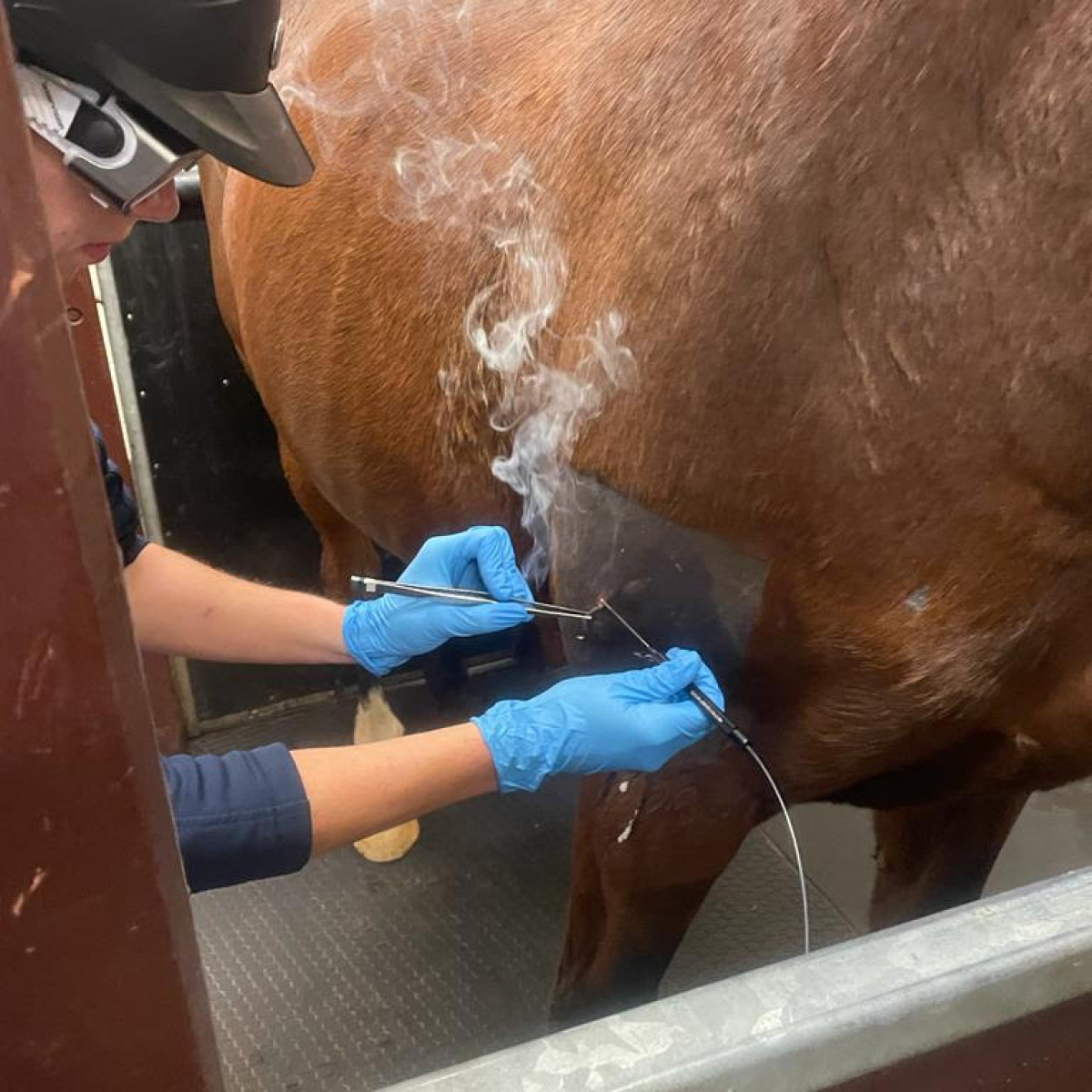Just How Laser Treatment in Horse Therapy Is Changing Vet Take Care Of Horses
Laser therapy has arised as a transformative method in equine vet care, providing a non-invasive option that speeds up recovery and boosts overall health and wellness. Leveraging exact light wavelengths, this innovative treatment promotes cellular regeneration, minimizes swelling, and minimizes pain. Its effectiveness extends from musculoskeletal injuries to persistent ailments like osteo arthritis, significantly enhancing wheelchair and life high quality for steeds. The mobility and flexibility of laser treatment gadgets further highlight their growing necessity among vets. As we explore the detailed auto mechanics and real-world successes, the profound influence on equine medical methods becomes significantly apparent.
Recognizing Laser Therapy

The innovation behind laser treatment is grounded in the principle of photochemistry, where photons are absorbed by chromophores within cells, causing enhanced ATP production and modulation of responsive oxygen types (Equine Therapy). This, in turn, promotes cellular proliferation, reduces inflammation, and speeds up recovery. Veterinary experts utilize different kinds of lasers, including low-level lasers (LLLT) and high-power Course IV lasers, depending upon the details healing purposes and the nature of the equine condition being dealt with
Various laser wavelengths and power settings are carefully chosen to target different cells midsts and accomplish wanted medical outcomes. Safety methods are critical, as improper use can lead to thermal damages or suboptimal restorative results. Thus, a detailed understanding of laser therapy's systems and applications is crucial for its efficient implementation in equine veterinary technique.
Benefits for Horse Health And Wellness
The myriad advantages of laser therapy for equine health include boosted recovery, pain reduction, and enhanced mobility. This sophisticated treatment modality leverages details wavelengths of light to pass through tissues, stimulating cellular function and advertising quick cells fixing. The non-invasive nature of laser therapy makes certain minimal stress and discomfort for the equine, facilitating a smoother recuperation procedure.
Boosted recovery is one of the primary benefits, as laser therapy accelerates cellular regeneration and collagen synthesis. Discomfort decrease is achieved through the anti-inflammatory impacts of laser treatment, which decreases swelling and lowers the production of pain-inducing chemicals.
Enhanced flexibility is another critical advantage, specifically for performance and working horses. By reducing inflammation and pain, and boosting tissue repair work, laser therapy assists in bring back joint feature and muscle versatility. The advancing effect of these benefits is not only a quicker go back to normal task however additionally a total improvement in the equine's lifestyle. Hence, laser treatment stands as a transformative device in contemporary horse veterinary treatment.
Typical Conditions Treated
Laser treatment has emerged as a versatile therapy option for a range of common equine problems. In addition, laser treatment is efficient for conditions like osteoarthritis, where it assists minimize joint swelling and promote cells repair.
Wound management is another location where laser therapy has actually site shown considerable guarantee. Chronic injuries or slow-healing ulcers can be specifically tough in horses, yet laser treatment improves cellular regrowth and boosts blood flow, hence quickening the healing procedure. Moreover, laser therapies have been successfully utilized in taking care of hoof problems such as laminitis and abscesses, relieving discomfort and promoting faster recuperation.

Technology Behind Laser Treatment
Past the myriad conditions treatable with laser treatment, the modern technology itself values closer evaluation. At the heart of laser treatment is the usage of certain wavelengths of light to penetrate cells and generate organic responses. These wavelengths, typically ranging from 600 to 1000 nanometers, are selectively taken in by chromophores in the skin, muscle, and various other cells, initiating a cascade of mobile occasions.
Laser tools used in veterinary medicine usually use low-level laser therapy (LLLT) or cold laser therapy. Unlike high-powered medical lasers, these gadgets operate at lower energy degrees, enhancing healing advantages while lessening thermal damages. The power from the laser light boosts adenosine triphosphate (ATP) manufacturing, improves mobile metabolic process, and speeds up tissue fixing processes.

Success Stories and Study

Showcasing the substantial advantages of laser treatment, many success stories and situation research studies brighten its transformative influence on equine wellness. One such situation involves a pureblooded racehorse struggling with persistent tendonitis. Typical therapies generated very little renovation, yet after incorporating laser therapy into the regimen, the horse exhibited significant reductions in inflammation and pain within weeks, inevitably returning to competitive racing.
One more engaging example features a dressage horse identified with extreme back discomfort, limiting its performance. A veterinary team used low-level laser treatment (LLLT) to target the irritated areas, causing marked renovation in versatility and a remarkable decline in discomfort. Over numerous sessions, the equine restored its peak form, showcasing the efficacy of laser therapy in addressing bone and joint issues.
In addition, a research study performed at a leading equine clinic analyzed 50 steeds with numerous soft cells injuries treated with laser useful link treatment. The outcomes stood out: 85% of the steeds showed increased healing times and improved wheelchair. These situations highlight the versatility and performance of laser treatment in equine medicine, using a non-invasive, scientifically-backed technique to boosting recovery and performance in steeds.
Conclusion
Laser therapy is revolutionizing equine vet treatment by providing a non-invasive therapy that speeds up healing, decreases swelling, and alleviates pain. With its performance in treating a series of conditions, from bone and joint injuries to persistent ailments like osteoarthritis, this technology dramatically enhances equine health and mobility. The portability and flexibility of laser treatment even more highlight its transformative influence on vet methods, strengthening its duty as an essential device in contemporary equine medical care.